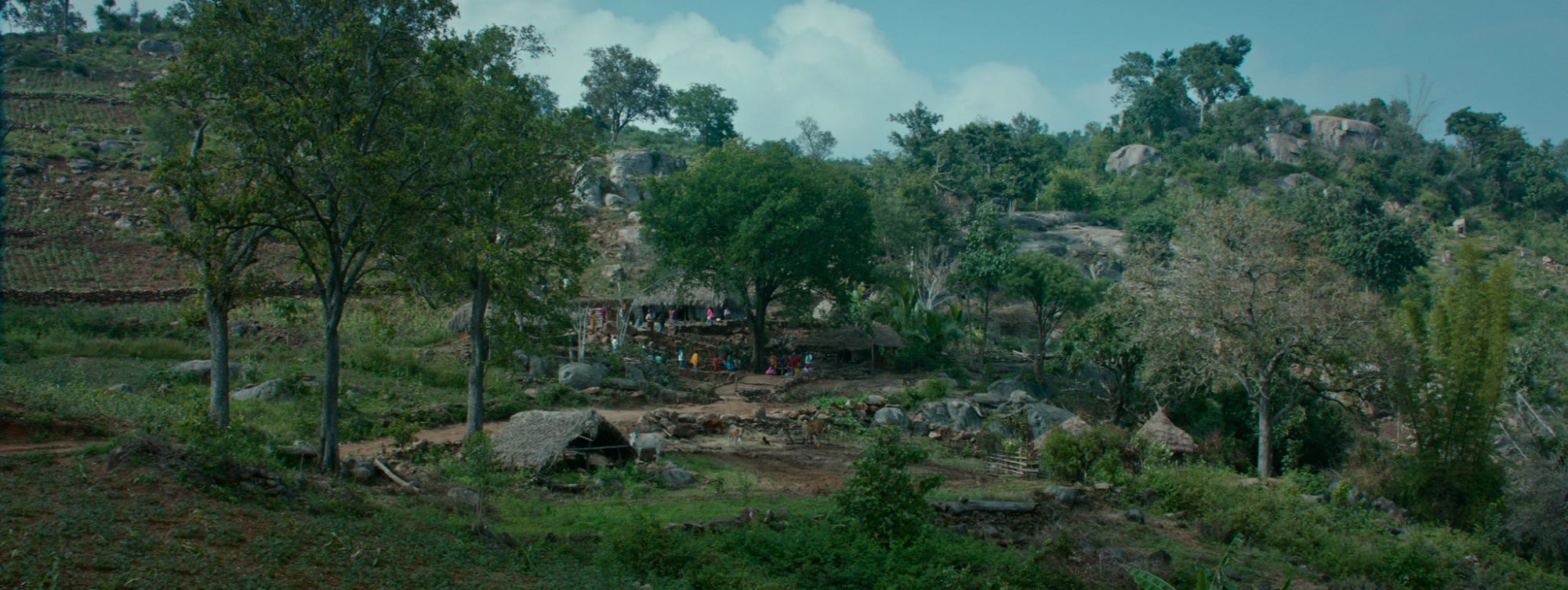Film Text: Horse Tail
Film Text: Horse Tail

Horse Tail
By Lukas Förster
Linguistically, a metaphor is at first a mere auxiliary construction: one term is transferred from its original context of meaning to another in order to express something new or to illustrate something that is already familiar. Differing from an analogy or an allegory, however, a metaphor has a tendency to develop a life of its own, a value in itself – precisely because it does not express a complete equivalence but is founded on more diffuse mechanisms of providing meaning like surface resemblance or association. Psychoanalysis is a good example: its central metaphors, especially as far as they are concerned with sexuality, have proven to be more durable and more fruitful for pop culture than the theory-building that once was their source. So when office employee Saravanan (Kalaiyarasan) in Kuthiraivaal by Manoj Leonel Jason and Shyam Sunder discovers one morning after waking up that a thick horse tail has grown out from his lower back, we can just about imagine where this is leading, even without having read Freud.
The cinematic metaphor implies one special problem insofar as it cannot remain in the realm of the symbolic but must be materialized as a sensuous phenomenon and as such must be dealt with thematically when it is filmed. The filmic metaphor is the tail wagging the dog. Or, specifically in the case of Kuthiraivaal, the tail wagging the film. For us in the audience this means that, during a great part of the film, we are watching a man who has to cope with something attached to his loins that does not belong there and that does not behave the way he would like to. The fact that nobody in Saravanan’s environment seems to notice the unusual bodily appendix does not change anything from the perspective of the film: from the moment that the camera allies itself with the protagonist’s psychosis, it provides the excess animal hair with cinematographic reality.
The narration initiated by the horse tail does not unfold to the external and to the future but to the internal and to the past. Or rather: the horse tail transforms external spaces into internal spaces. The gloomy apartment in which Saravanan lives becomes the direct image of his torn psyche in labyrinthic wide-angle shots and his workplace, a gaudy open-plan office, can be interpreted as a mirror of his growing mental alienation. Eventually, in the second half of the film, a third pivotal space opens up, a memory space, a space of childhood, which simultaneously shifts the setting of the film from the big city to the rural and rustic province.
The internal view and the reflection of familial conditioning: both are of course classic methods of psychoanalysis. When Saravanan even forgets his name temporarily and starts calling himself “Freud”, the reference becomes so overly obvious as to cause some skepticism. Soon the suspicion arises that the discourse of psychoanalysis is itself a part of the psychosis. At least psychoanalysis is merely one theoretical system along with many others, which all attempt to bring some order into a basically chaotic world while ultimately only creating more chaos. Just as Buddhist chants and a Vivaldi symphony mix in Saravanan’s head during his bouts of illness and as camera realism and demonstratively artificial digital effects coexist in the elaborate sequence shots that constitute the bulk of the film, the narration combines psychoanalytic themes and Indian mythology. In turn, the metaphor does not have the function of disentangling this beautiful hodgepodge and of recreating a pure filmic and cultural primitive state. In fact, it merrily dances along in this carnival of signs.
